Hello Hivers.
☺☺☺
Today I will tell you some things I have learned about some insects and I will start with the chipos since I see them almost daily in the garden. Chipo is the name we give to these insects here in Venezuela, I clarify this because it is known by different names depending on the country where you are, also there are more than 130 species so we can think that the different names belong to each species and it is not so. Most of them feed on blood, only a few of them feed on other invertebrates.
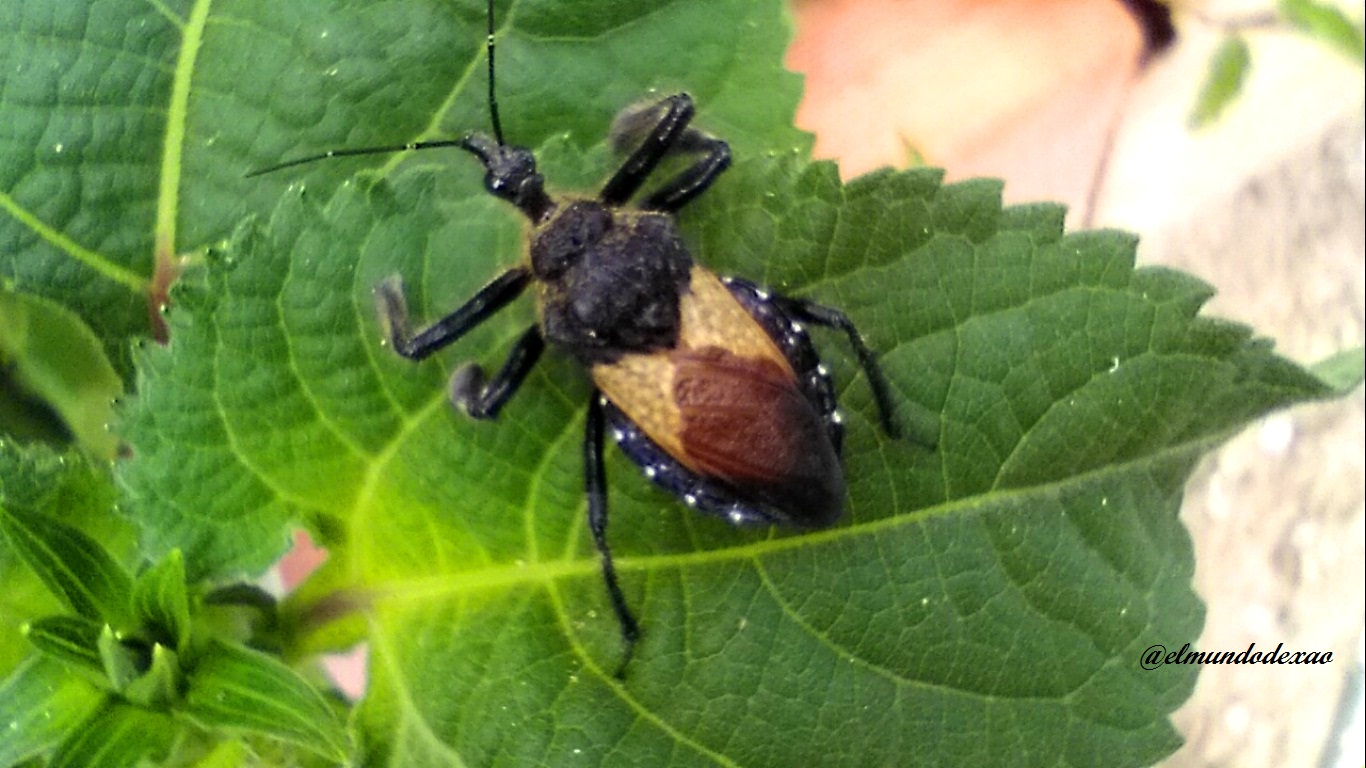 These insects have antennae with amazing capabilities, as if it were a very advanced technology since they possess different sensory faculties such as: chemical, thermal and tactile sensors. Guided by our own we can think that this specimen is a Panstrongylus since the antennae are very close to the eyes and this is the main characteristic that defines them.
These insects have antennae with amazing capabilities, as if it were a very advanced technology since they possess different sensory faculties such as: chemical, thermal and tactile sensors. Guided by our own we can think that this specimen is a Panstrongylus since the antennae are very close to the eyes and this is the main characteristic that defines them.
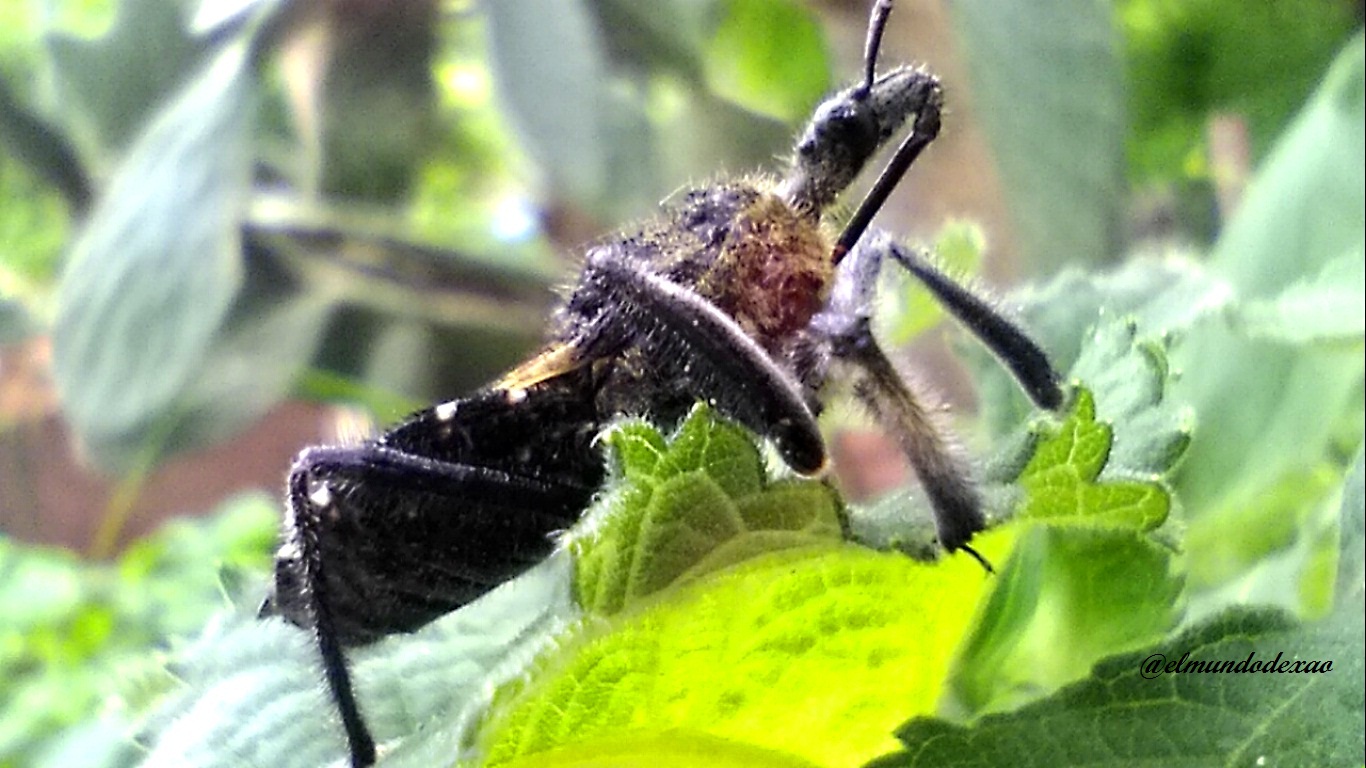 Another insect that has been emerging in large numbers in my yard, are black beetles, but only this particular type, at night I usually collect more than a dozen as they are annoying in their constant bumping into the computer screen. I imagine that since I bring all the ones I collect at night to the yard and place them in a place where we put the fruit and vegetable waste, they have chosen these spaces to lay their eggs.
Another insect that has been emerging in large numbers in my yard, are black beetles, but only this particular type, at night I usually collect more than a dozen as they are annoying in their constant bumping into the computer screen. I imagine that since I bring all the ones I collect at night to the yard and place them in a place where we put the fruit and vegetable waste, they have chosen these spaces to lay their eggs.
 This black beetle is the one that my pet does not like, perhaps because of its odor since this beetle is well known as a dung beetle. These are the ones that collect dung to make balls that will serve as incubator and food, since this one is polished on the outside so that internally it maintains the adequate humidity and temperature for the development of the larva.
This black beetle is the one that my pet does not like, perhaps because of its odor since this beetle is well known as a dung beetle. These are the ones that collect dung to make balls that will serve as incubator and food, since this one is polished on the outside so that internally it maintains the adequate humidity and temperature for the development of the larva.
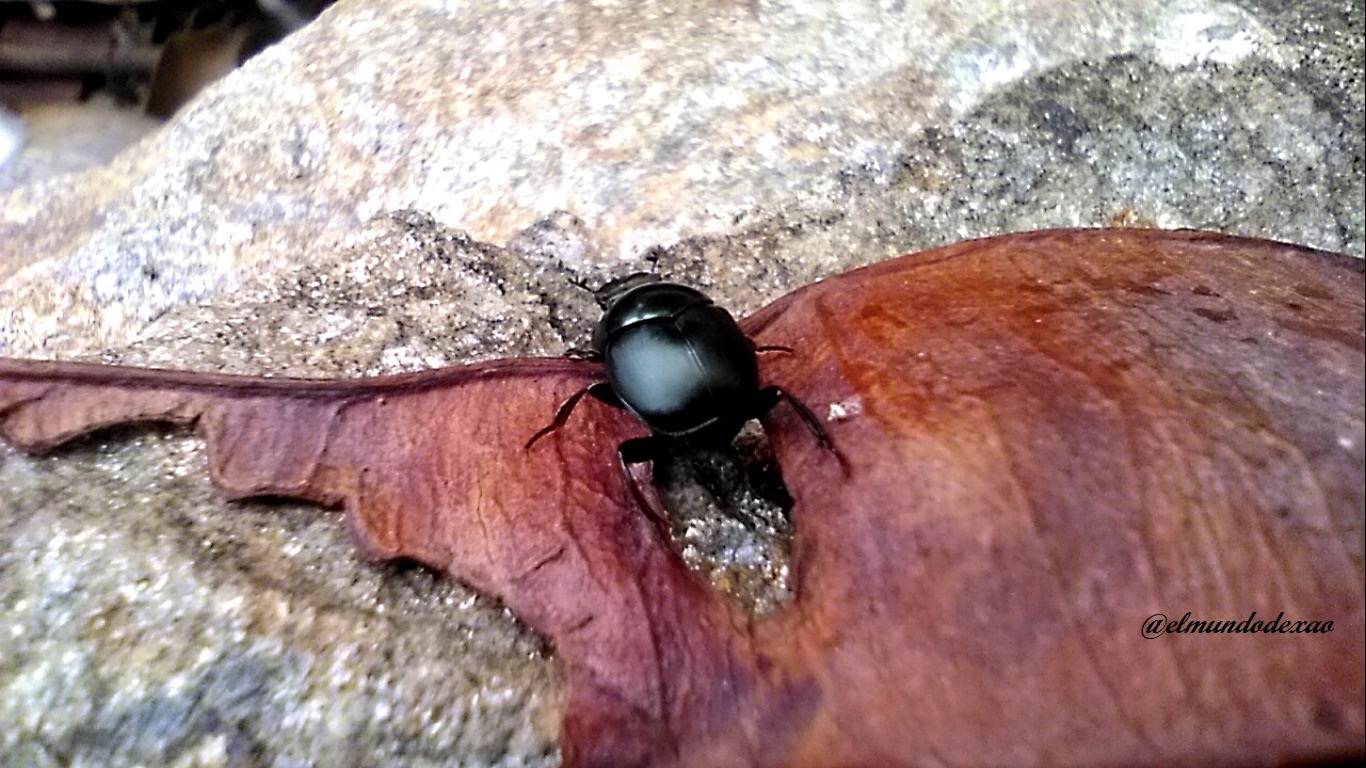 Finally this bee that I found perched on a leaf, behavior that seems strange to me since they are very active insects and especially because it is surrounded by flowers, observing it carefully I realized that it has slightly deteriorated wings so I imagine it is difficult to maintain its natural rhythm and is possibly taking a break.
Finally this bee that I found perched on a leaf, behavior that seems strange to me since they are very active insects and especially because it is surrounded by flowers, observing it carefully I realized that it has slightly deteriorated wings so I imagine it is difficult to maintain its natural rhythm and is possibly taking a break.
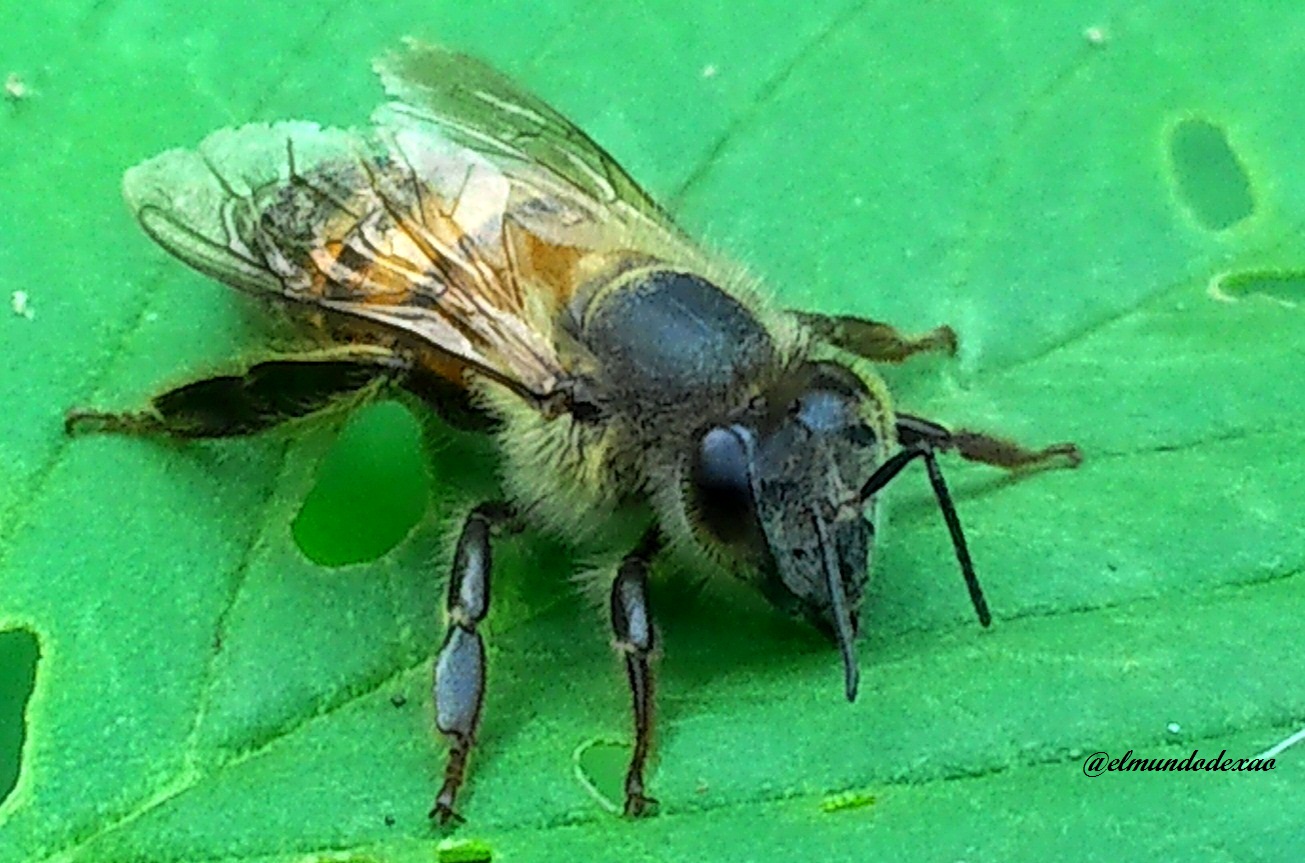 Another possibility is that it can no longer return to the hive; I was told a story that I have not been able to corroborate so far and that is that bees that do not perform or become dirty cannot return to the hive because they are not accepted, obviously from that moment on their existence has no reason to exist.
Another possibility is that it can no longer return to the hive; I was told a story that I have not been able to corroborate so far and that is that bees that do not perform or become dirty cannot return to the hive because they are not accepted, obviously from that moment on their existence has no reason to exist.
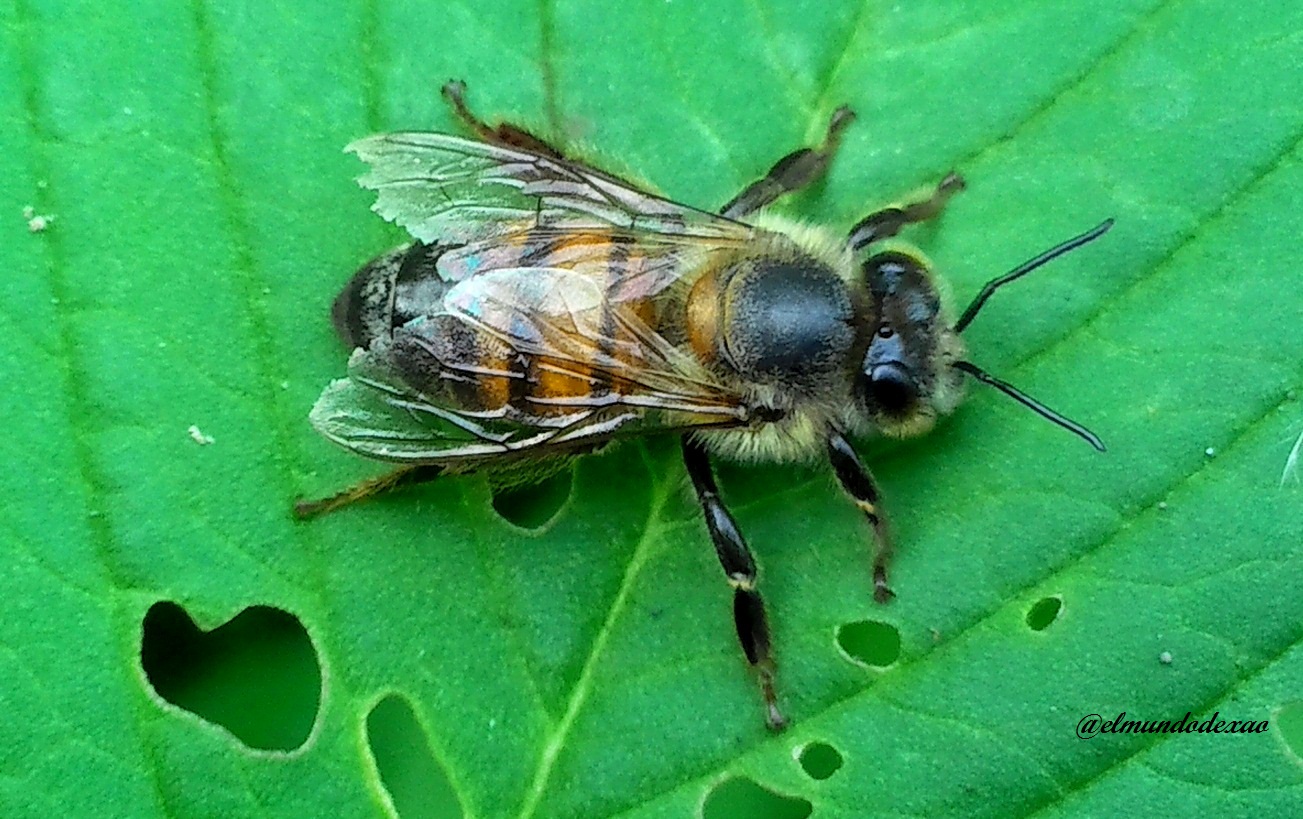
Photo Source: Own photos captured with a Síragon camera.
Modified size: With the Paint Program.
Thanks for visiting my Blog… AH! Don't forget to vote, reblogear, and comment.
Translated with:


Hola Hivers.
☺☺☺
Hoy les contare algunas cosas que he aprendido sobre algunos insectos y comenzare con los chipos ya que los veo prácticamente a diario en el jardín. Chipo es el nombre que le damos a estos insectos aquí en Venezuela, les aclaro esto porque es conocido por diferentes nombres según sea el país donde te encuentres, además son más de 130 especies por lo que podemos pensar que los diferentes nombres pertenecen a cada especie y no es así. La mayoría de ellos se alimentan de sangre, solo unos pocos se alimentan de otros invertebrados.
 Estos insectos tienen antenas con capacidades asombrosas, como si se tratase de una tecnología muy avanzada ya que poseen distintas facultades sensoriales como lo son: sensores químicos, térmicos y táctiles. Guiándonos por nuestras podemos pensar que este espécimen es un Panstrongylus ya que las antenas están muy cerca de los ojos y está en la característica principal que los define.
Estos insectos tienen antenas con capacidades asombrosas, como si se tratase de una tecnología muy avanzada ya que poseen distintas facultades sensoriales como lo son: sensores químicos, térmicos y táctiles. Guiándonos por nuestras podemos pensar que este espécimen es un Panstrongylus ya que las antenas están muy cerca de los ojos y está en la característica principal que los define.
 Otro insecto que ha estado emergiendo en grandes cantidades en mi patio, son los escarabajos negros, pero solo este tipo en particular, por las noches suelo recoger más de una docena ya que molestan en su constante tropezón con la pantalla del computador. Imagino que como yo llevo al patio todos los que recolecto en las noches y los coloco en un sitio donde colocamos los desperdicios de frutas y vegetales, han escogido estos espacios para depositar sus huevos.
Otro insecto que ha estado emergiendo en grandes cantidades en mi patio, son los escarabajos negros, pero solo este tipo en particular, por las noches suelo recoger más de una docena ya que molestan en su constante tropezón con la pantalla del computador. Imagino que como yo llevo al patio todos los que recolecto en las noches y los coloco en un sitio donde colocamos los desperdicios de frutas y vegetales, han escogido estos espacios para depositar sus huevos.
 Este escarabajo negro es el que no le agrada a mi mascota, quizás por su olor ya que este escarabajo es muy conocido como escarabajo pelotero. Estos son los que recolectan estiércol para hacer pelotas que servirán como incubadora y alimento, ya que esta es lustrada por fuera para que internamente mantenga la humedad y temperatura adecuada para el desarrollo de la larva.
Este escarabajo negro es el que no le agrada a mi mascota, quizás por su olor ya que este escarabajo es muy conocido como escarabajo pelotero. Estos son los que recolectan estiércol para hacer pelotas que servirán como incubadora y alimento, ya que esta es lustrada por fuera para que internamente mantenga la humedad y temperatura adecuada para el desarrollo de la larva.
 Por ultimo esta abeja que encontré posada en una hoja, comportamiento que se me hace extraño ya que son insectos muy activos y sobre todo porque está rodeada de flores, observándola detenidamente me di cuenta que tiene las alas un poco deterioradas por lo que imagino se le hace difícil mantener su ritmo natural y posiblemente se esté tomando un descanso.
Por ultimo esta abeja que encontré posada en una hoja, comportamiento que se me hace extraño ya que son insectos muy activos y sobre todo porque está rodeada de flores, observándola detenidamente me di cuenta que tiene las alas un poco deterioradas por lo que imagino se le hace difícil mantener su ritmo natural y posiblemente se esté tomando un descanso.
 Otra posibilidad es que ya no pueda volver al panal; me contaron una historia que hasta ahora no he podido corroborar y es que las abejas que no rinden o se ensucian no pueden volver al panal porque no son aceptadas, obviamente a partir de ese momento su existencia no tiene razón de ser.
Otra posibilidad es que ya no pueda volver al panal; me contaron una historia que hasta ahora no he podido corroborar y es que las abejas que no rinden o se ensucian no pueden volver al panal porque no son aceptadas, obviamente a partir de ese momento su existencia no tiene razón de ser.

Fuente de Fotos: Propias capturadas con una cámara Síragon.
Modificado el tamaño: Con el Programa Paint.
Gracias por visitar mi Blog… ¡AH! No se olvide de votar, rebloguear y comentar.












